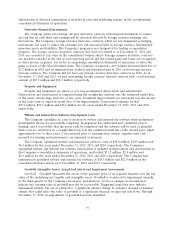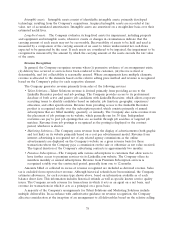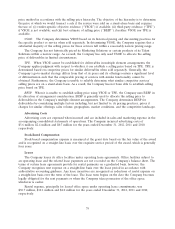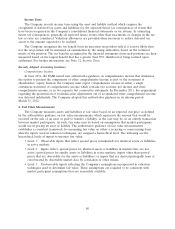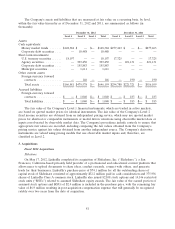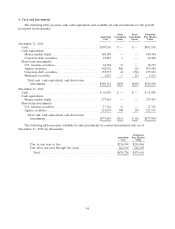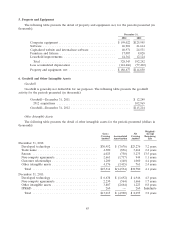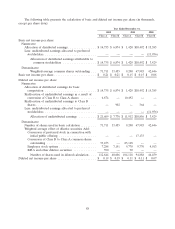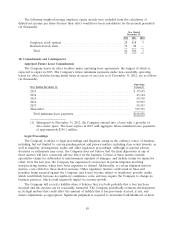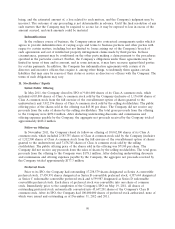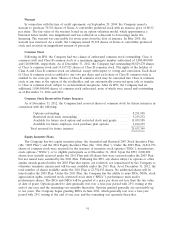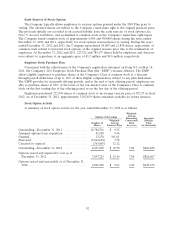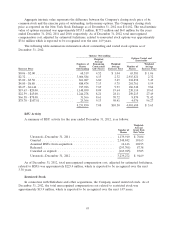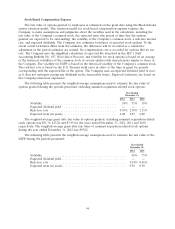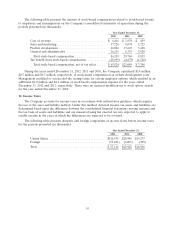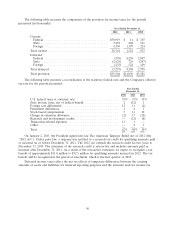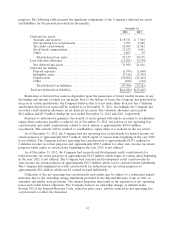LinkedIn 2012 Annual Report Download - page 89
Download and view the complete annual report
Please find page 89 of the 2012 LinkedIn annual report below. You can navigate through the pages in the report by either clicking on the pages listed below, or by using the keyword search tool below to find specific information within the annual report.entitled to a proportionate share of any such dividend as if they were holders of common stock (on an
as-if converted basis). The holders of the Company’s Series A and B convertible preferred stock and
Series C and D redeemable convertible preferred stock did not have a contractual obligation to share in
the losses of the Company. The Company considered its preferred stock to be participating securities and,
in accordance with the two-class method, earnings allocated to preferred stock and the related number of
outstanding shares of preferred stock have been excluded from the computation of basic and diluted net
income per common share.
Under the two-class method, net income attributable to common stockholders is determined by
allocating undistributed earnings, calculated as net income less current period Series A and Series B
convertible preferred stock and Series C and D redeemable convertible preferred stock non-cumulative
dividends, between common stock and Series A and Series B convertible preferred stock and Series C and
D redeemable convertible preferred stock. In computing diluted net income attributable to common
stockholders, undistributed earnings are re-allocated to reflect the potential impact of dilutive securities.
Basic net income per common share is computed by dividing the net income attributable to common
stockholders by the weighted-average number of common shares outstanding during the period. Shares of
common stock subject to repurchase resulting from the early exercise of employee stock options are
considered participating securities and are therefore included in the basic weighted-average common
shares outstanding. Diluted net income per share attributable to common stockholders is computed by
dividing the net income attributable to common stockholders by the weighted-average number of common
shares outstanding, including potential dilutive common shares assuming the dilutive effect of outstanding
stock options using the treasury stock method.
Immediately prior to the consummation of the Company’s IPO of its Class A common stock in May
2011, all outstanding shares of preferred stock and common stock were converted to Class B common
stock. As a result, Class A and Class B common stock are the only outstanding equity in the Company.
The rights of the holders of Class A and Class B common stock are identical, except with respect to
voting and conversion. Each share of Class A common stock is entitled to one vote per share and each
share of Class B common stock is entitled to ten votes per share. Shares of Class B common stock may be
converted into Class A common stock at any time at the option of the stockholder, and are automatically
converted upon sale or transfer to Class A common stock, subject to certain limited exceptions.
Basic net income per share is computed using the weighted-average number of common shares
outstanding during the period. Diluted net income per share is computed using the weighted-average
number of common shares and, if dilutive, potential common shares outstanding during the period. The
Company’s potential common shares consist of the incremental common shares issuable upon the exercise
of stock options. The dilutive effect of outstanding stock options is reflected in diluted earnings per share
by application of the treasury stock method. The computation of the diluted net income per share of
Class A common stock assumes the conversion of Class B common stock, while the diluted net income
per share of Class B common stock does not assume the conversion of Class A common stock as Class A
common stock is not convertible into Class B common stock.
The undistributed earnings are allocated based on the contractual participation rights of the Class A
and Class B common shares as if the earnings for the year have been distributed. As the liquidation and
dividend rights are identical, the undistributed earnings are allocated on a proportionate basis. Further, as
the conversion of Class B common stock is assumed in the computation of the diluted net income per
share of Class A common stock, the undistributed earnings are equal to net income for that computation.
87


